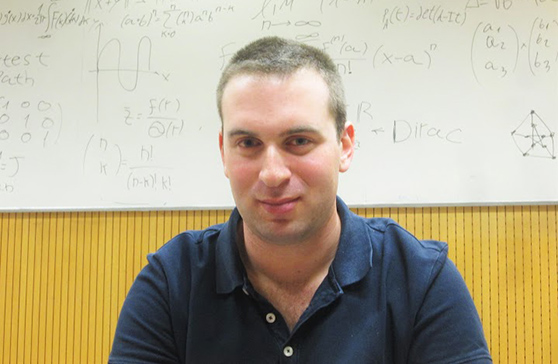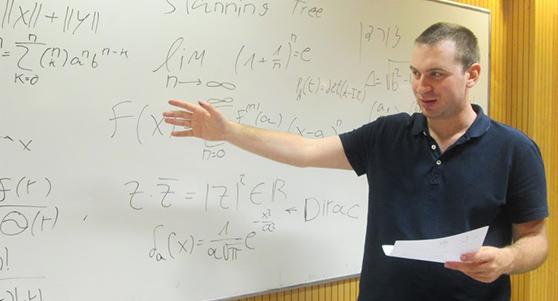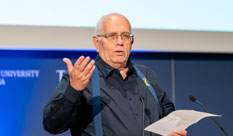More:
News & Stories
2 academic degrees together–the story of Uriah Gruber
Uriah Gruber, 25, studies towards a degree in Computer Science and a degree in Applied Math, simultaneously. He is also a teaching assistant in the Faculty of Sciences.
His final project, under the guidance of Dr. Yirmeyahu (Jeremy) Kaminski Head of Applied Mathematics Department deals with face recognition in an innovative method and has remarkable results.
When Uriah first arrived as a prospect student at the open day in the department of computer science he was surprised to find that applicants with outstanding grades like his, are entitled to study towards two academic degrees at the same time. "I remember how Prof. Yakubov, then Dean of the Faculty of Sciences, talked about this option. It opened a possibility I haven't thought of before. When I learned about the degree in applied Mathematics, I've decided to take them both" he says.

Uriah Gruber
Were you concerned about the amount of time you'd invest in studying?
I was but I was also very excited about it. At that point in my life I've decided to put all my efforts into studying. I was lucky to have chosen two fields which complement each other so that studying is interesting and effective.
About a year ago Uriah became a teaching assistant in various courses in Math and computing. "Some people say that the best way to study something and understand it perfectly is to teach it. This is true and I realize it on a daily basis. I cannot hide my intention to later become a lecturer".
I was but I was also very excited about it. At that point in my life I've decided to put all my efforts into studying. I was lucky to have chosen two fields which complement each other so that studying is interesting and effective.
About a year ago Uriah became a teaching assistant in various courses in Math and computing. "Some people say that the best way to study something and understand it perfectly is to teach it. This is true and I realize it on a daily basis. I cannot hide my intention to later become a lecturer".

Uriah Gruber- a student and a teaching assistant at the Faculty of Sciences.
Why did you choose the subject of "face recognition" for you graduation project?
About a year ago I was approached by Dr. Kaminski, who told me that together with Dr. Dimitry Goldstein, they offer some elected students the opportunity to do a graduation project. I was very flattered by this and was honored to work next to Dr. Kaminski, who is highly regarded in this field. The project deals with the question of how can a computer, similar to a human being, know that 2 entirely different portraits that belong to the same person. For my final project I was asked to improve the algorithm and to implement it.
When experimenting with the algorithm that I have developed you can reach a 90% success in identification. This is a real achievement. Dr. Cornel Lustig had challenged me even more suggesting that I'd run the algorithm of images of pairs of flowers. To our great surprise the identification was perfect here too."
About a year ago I was approached by Dr. Kaminski, who told me that together with Dr. Dimitry Goldstein, they offer some elected students the opportunity to do a graduation project. I was very flattered by this and was honored to work next to Dr. Kaminski, who is highly regarded in this field. The project deals with the question of how can a computer, similar to a human being, know that 2 entirely different portraits that belong to the same person. For my final project I was asked to improve the algorithm and to implement it.
When experimenting with the algorithm that I have developed you can reach a 90% success in identification. This is a real achievement. Dr. Cornel Lustig had challenged me even more suggesting that I'd run the algorithm of images of pairs of flowers. To our great surprise the identification was perfect here too."
- News & Events
New Collaboration with Sheba Medical Center will qualify nurses to work in a digital environment.
Collaboration between HIT Holon Institute of Technology, the teaching authority of the Sheba Medical Center, and the Sheba-BEYOND virtual hospital will allow training nurses in Israel and around the world to work in a digital...



 Additional programs
Additional programs
